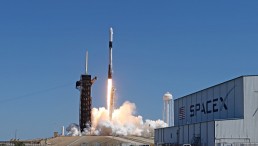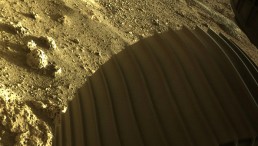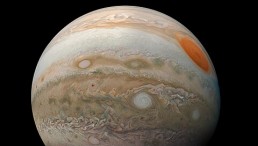NASA is preparing for the potential effects of swirling Sun debris that may hit Earth later this week or early next week. The American space agency has released a solar storm warning after recently detecting a coronal mass ejection (CME) of plasma and magnetic field that escaped from the Sun.
Scientists use the term solar storm to describe the effects of CMEs, solar flares, geomagnetic storms, and other solar particle events felt on Earth. It could disrupt power grids and satellites when they hit the planet.

A frame from a movie recorded on November 9th by the orbiting TRACE telescope, it shows coronal loops lofted over a solar active region.
Swirling Sun Debris Predicted to Deliver Glancing Blow to Earth
NASA detected that a CME of plasma and a large filament of magnetic field escaped from the Sun's bottom half and will likely strike the planet later this week, Express.co.uk reported.
Space weather physicist Dr. Tamitha Skov warned that this will deliver a glancing blow to Earth's southern hemisphere and cause mild disruption. Based on NASA predictions, the physicist said that it will likely hit the planet by late December 11.
"Expect a mild disturbance, but the aurora is possible at high latitudes with sporadic amateur radio & GPS issues on Earth's nightside," she said as quoted by the news outlet.
Astronomers at the South African National Space Agency added that two CMEs from filament eruptions will potentially hit Earth. The first one is expected to hit Earth at 7 PM on December 9, although the confidence level is too low because of limited imagery available.
Meanwhile, the second ejection is predicted to pass Earth around 10 AM in December and likely cause mild disruptions. Astronomers said that although the speeds of the solar storm will initially be at background levels, they predict that it could become stronger as the CMEs or the influence from coronal hole 29 (CH29) in the northwest quadrant would likely affect it.
Furthermore, Express.co.uk cited SpaceWeather.com's report that the swirling debris will barely miss the planet and will fly south of the planet. A near-miss solar storm could spark auroras around the poles as CMEs can escape the Sun at speeds between 560,000 miles per hour to over 6.7 miles per hour.
NOAA's Space Weather Prediction Center also reported on December 9 potential impacts of the solar storm will significantly affect satellite systems.
How Prepared is Earth for Solar Storms?
Earth has already experienced the worst-case scenario of a solar storm hitting Earth before, but no one from that time is still alive today. In 1859, the Carrington Event was recorded when an eruption of charged particles streamed toward Earth. NBC News reported that the telegraph was just invented and countries were not yet electrified at that time.
However, telegraph operators were still shocked after telegraph lines were hit by charges from the Sun particles that were powerful enough to affect them. Due to that, telegraph paper was lit on fire. If the same intensity of the solar storm happens today and without prior warning, it could result in a catastrophe that will affect power plants, substations, and transmission lines.
So, how prepared is Earth for such a scenario? The news outlet reported that federal agencies could set up temporary transformers to serve as a stopgap, while the Department of Homeland Security could deploy their Recovery Transformer that can be installed anywhere in an emergency.
Moreover, the Department of Energy (DOE) is working on a transformer reserve that can supply extra transformers across the US. Rob Manning, the vice president for transmission at the Electric Power Research Institute, said utilities are also working solutions by building capacitor banks that could work like batteries to absorb and dissipate excess energy.
Scientists are also working on better warning systems that will forecast any possible solar storm that may hit Earth and cause disruptions to satellites and power grids.
RELATED ARTICLE: New Solar Storm Warning: Massive Magnetic Filament Snagged From Sun's Lower Region Propels CME Toward Earth on Monday
Check out more news and information on the Solar Storm in Science Times.














